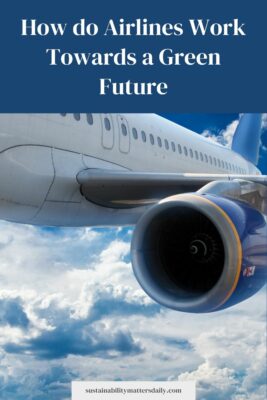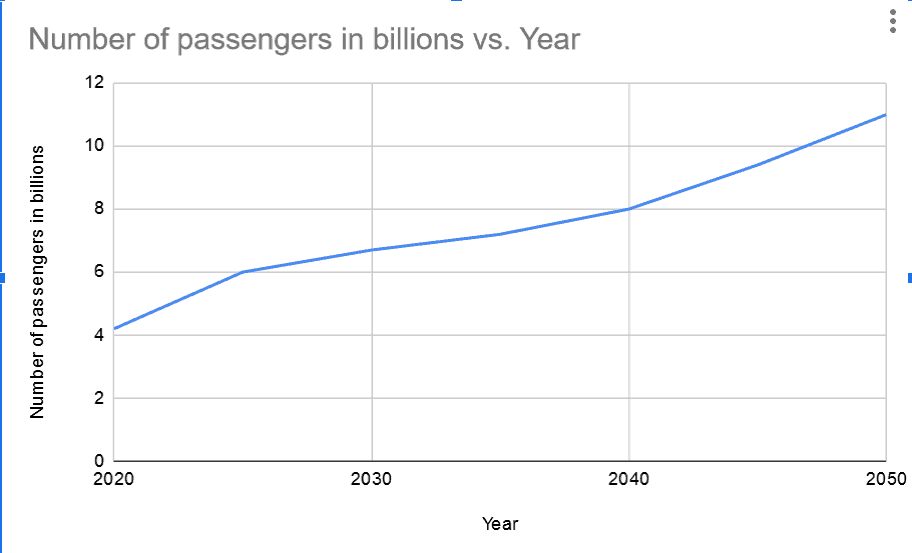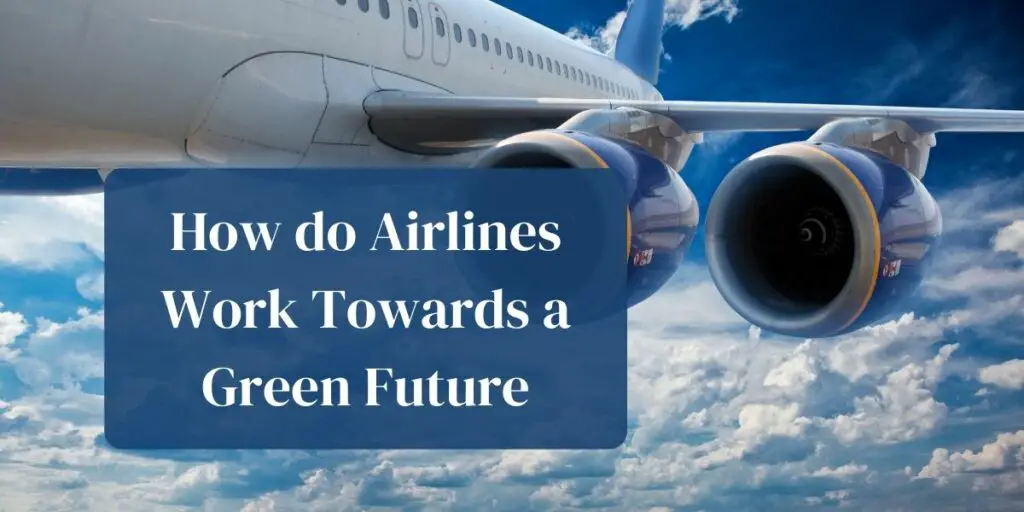More and more people are educated about the environmental impact from the aviation industry. On the other hand, the airline traffic has not been growing as much as it does these days. So….we know that what we are doing will hurt the planet, but we still continue to do so? It sounds familiar. After all, 99 % of all people will (unfortunately) choose comfort over eco-friendliness.
There is one elephant in the room. The airline companies. Because what do they really do in order to minimize the carbon footprint that they and all their passengers leave every day?
PS! In the end of the article you will find a full list of things that airline companies should do in order to save the planet. If you agree or disagree, feel free to leave a comment below.

Table of Contents
- Why do airplane companies need to look into their carbon footprint?
- But first: how does airline companies work towards reducing their carbon footprints?
- Risk of “greenwashing”
- What should airlines do in order to become more environmentally friendly?
- Conclusion
Why do airplane companies need to look into their carbon footprint?
Let me quickly illustrate why air travel is a huge environmental issue. According to the most realistic projection, this is the growth we will see in airline passengers between 2020 and 2050:

The numbers can be explained more in depth by the International Air Transport Association (IATA) by clicking this link. But, frankly, I think it’s more than enough to look at the graph. It tells a story about a industry that’s growing.
What’s the consequences of a booming aviation industry?
Pros:
– More jobs are being created within the industry.
– More jobs are indirectly created as a part of the travel industry.
– As more airports are being built, people have easier to visit places they’ve never been to before.
Cons:
Everything seems to be great about airplanes, right? 🙂
Think again.
The European Environment Agency (EEA) published an article where they looked into the carbon footprint of different transportation methods. Their method was quite good as it demonstrates how much CO2 that will be released into the atmosphere by using different machines. E.g.:
– Train will release 14 grams of CO2 per passenger per kilometer.
– The average car will release 55 grams/per passenger/kilometer.
– An airplane? Well, that one releases 285 grams of CO2 per passenger per kilometer.
In other words: it’s more than 20 times better to take the train compared to taking an airplane!
That’s why airline companies should be forced to reduce their carbon footprint. Simple as that.
Now, let’s look into some of the things that they CAN do in order to help reducing CO2 emissions.
But first: how does airline companies work towards reducing their carbon footprints?
Let me try to summarize some of the action points that actually are happening right now.
1) Innovation attempts to make the engines more powerful with less energy.
Due to innovation within the technical space, airplane engines are now 16 % more efficient than what they were just 5 years ago. This is actually an area where most airlines are very interested in rapid development. Not only does the CO2 emissions go down, but the companies also save money by using less fuel per meter.
Pratt & Whitney is the leading American aerospace manufacturer. Their Vice President for Technology & Environment, Alan Epstein, gave an interview to eco-business.com. He said the following about how innovation could help financially and environmentally:
“We are always looking to introduce new designs with lighter materials, and using manufacturing technologies that let us make lighter shapes than we could otherwise economically afford to. All these help to reduce the fuel burn”.
In other words: airline companies need to strongly support innovation within the tech field. This is something that will both save the planet – and cost. Therefore, it’s in the best interest of everyone.
2) Biofuel.
Just a quick funfact for you: if most the transport sector (including cars, trains, airplanes, etc.) started to use biofuel, we could decrease the CO2 emissions by 80 %. Despite the fact that many airlines have tried to run their jets on biofuel, there are still some challenges they need to overcome to make it mainstream.
Better engines and more eco-friendly fuel are the two main areas where the industry is improving.
3. Reduce the weight in their cabin
Several companies have already started to take action to reduce weight in the cabin. For instance, Scandinavian Airlines System (SAS) is one of many companies that recently have stopped “taxfree shopping” onboard.
In other words: their customers are no longer allowed to purchase alcohol, tobacco or inexpensive sunglasses during their flight. According to the airline, this is done in order to reduce the total weight of the aircraft and therefore also use less fuel.
Risk of “greenwashing”
Don’t get me wrong here. I strongly believe that some airlines really do care about the fact that they pollute the world. And in order to fix that, they work hard towards new green methods to transport people and goods in the air. However, we do also know that big companies feel that they are forced to promote some sort of “green initiative” in order to not lose face.
One airline company was bold enough to promote themselves as an “ecofriendly warrior” after they switched their menu from beef to chicken on long-distance flights. Another one was very proud that they stopped wrapping their blankets into plastic for every single flight. Don’t get me wrong here: both are probably great eco-friendly initiatives.
But you can clearly see that the environmental impact of less beef & plastic do not really matter in the big picture if your company fly from Stockholm to Bangkok every day…
What should airlines do in order to become more environmentally friendly?
The numbers are pretty clear. We need change now. The change will not come by itself, but as a result of hard work from leading companies within the industry.
1) Take more responsibility.
You will see a lot of airline companies’ talk about how much they do to become more environmentally friendly. That being said, you will very seldom see them criticize themselves in any way. I guess we could say the same to these companies as we do to people with alcohol problems: the first step to succeed is to admit.
2) Work closer with governments.
Many airlines are owned or partly owned by governments. That means that it should be easy to connect national climate policies with investment in biofuel, more efficient engines and so on.
Those are the two main action points that should be implemented as soon as possible. On the other hand, customers and politicians should also be better at putting pressure on them. I would bet that 99 % of all customers do only think about the price of the ticket (and maybe the most convenient departure time) when ordering flight tickets online. If more people actually cared about what the company stood for, it could change the industry to the better.
Conclusion
Although we see some efforts within the industry, there are so much more that has to be done. Frankly, it is hard to tell a profit-seeking company that they would need to put environmental interests over profit. That is never going to happen unless either their customers or the government(s) tell them to do so.
However, we should not be too pessimistic. The development towards a more eco-friendly aviation industry goes slow, but it is quite constant. As long as the companies can see financial value in investing in green innovation, we should still hope for a positive breakthrough.
What’s “annoying” is to see the extreme growth of passengers that will occur in the near future. In order to minimize the total environmental footprint of the aviation industry, the positive output of the technological development needs to outweigh the growth in the number of passengers. And to be quite frank, I struggle to see that happen.



I agree with some of the points in the article. I also disagree with some.
– I believe that the government should be more focused on punishing the airline companies.
– It’s not up to them to run the innovation, it’s a government task.
– People should have to pay MUCH more for the airplane tickets.
I hear all the time that “oooh, what about if poor people cannot afford to travel?”. Well, guess what. Flying an airplane isn’t something that should cost 20 USD and be affordable to “anyone”. If you struggle to take your family on an airplane, I would strongly suggest that you go and try out some different type of holiday.
Hi Ulrikka, thanks for your comment.
I tend to agree with some of what you’re writing. For instance, flying an airplane is not a part of the “human rights rules”.
On the flipside, IF the government put a heavy tax on airplane tickets, they have to spend that money on eco-friendly affordable transportation methods like trains and more public buses.
Asking “poor people” to stop traveling isn’t very nice.